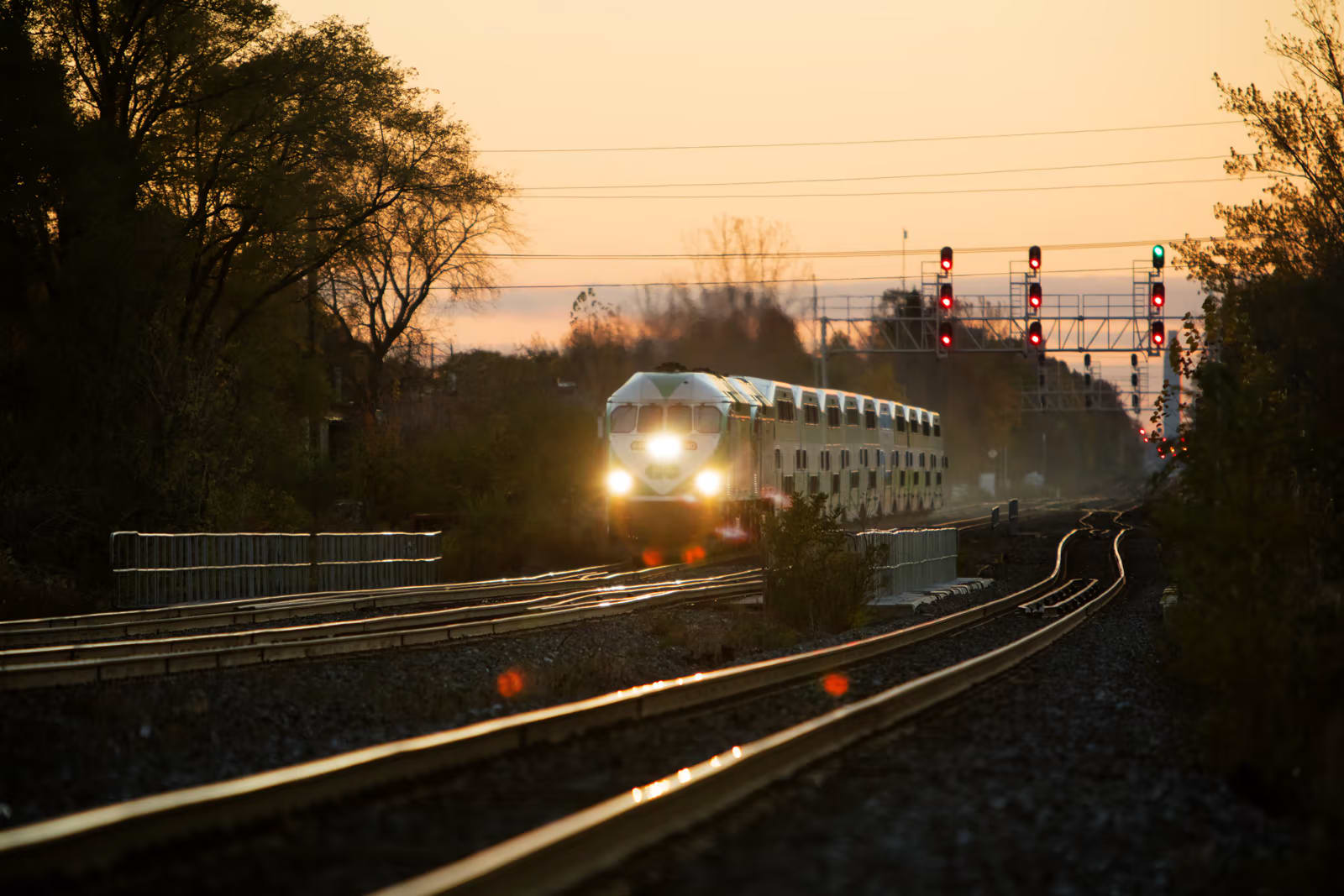Not so fast - what allows GO Trains to speed up and slow down?
The rules of the road. We explain why a train goes from 93mph one minute to 10mph the next.
Jun 25, 2020
You’re heading down the highway, and nearby, a train is moving in the same direction.
Do you judge your speed, compared to how fast that big behemoth is moving?
Or even, as traffic starts to build in front of you, perhaps envy the seemingly steady speed of a rolling locomotive?
As many passengers on GO Transit trains know, they don’t actually have one constant speed.
Just as speed limits are posted along roadways and highways, regulating how fast vehicles can travel, trains have similar rules they must adhere to – but they don’t only come in sign form. There are many considerations at play when it comes to train speed.
A train speed sign along the side of the GO Train tracks. (Metrolinx photo)
We thought we’d bring you up front to where the women and men who control the throttle and brakes sit, to explain the rule-books – and physics – involved in explaining why some sections are fast and others very slow.
But first, a reminder that trains can’t just come to a standstill on a dime. The amount of energy required to stop a loaded 12-car GO train, weighing just over 1,100 metric tonnes from a speed of 80 mph (129 km/h) could power the average Ontario household for eight days.
Speeds are governed by subdivision zone speeds outlined in the Time Table. That’s why trains travel at 10 mph (16 km/h) from Guelph GO Station for the first mile. There are also restrictions in the Daily Operating Bulletin (DOB), which is good for 24 hours. This is where crews will find things such as temporary slow orders due to track conditions. The document is used by train crews and they must have it in their possession while on duty.
Train signals are complicated. There are 37 different indications and the signals could have one, two or three lights depending on the location (Metrolinx photo).
On tracks, white speed signs warn the crew a slowdown is approaching in 3,000 yards, so they have time to prepare for the drop in speed.
And throw in the signal system, track curvature, road crossings, and bridges into the equation – oh, and we should mention knowledge of every mile on every corridor – and you’ll come up with a complex system train crews must be well versed in before climbing onboard.
People who aren’t supposed to be on the tracks can also impact train speeds, as crews will slow or stop if they see or receive reports of someone in the area the train is travelling in.
“The most important thing that the train crew must be aware of is signal indications,” said Kevin Claerbout, manager of train operations.
“The signals are similar to stop lights, but instead of three indications (go, yield, stop) there are 37 different indications and the signals could have one, two or three lights depending on the location.
Train speeds are governed by subdivision zone speeds outlined in the official time table. Train crews must have this document in their possession while on duty. (Metrolinx photo)
“The signals progression will tell the train crews in advance of when they are going to need to stop or slow down the train. They also tell the train crew at what speed to proceed from one signal to the next. This is usually due to having to cross a train over from one track to another.”
While police don’t monitor tracks for speed violations, that doesn’t mean they aren’t paid attention to.
Speed compliance is monitored several ways, including by field radar testing – similar to police radar guns – and random event recorder downloads (also known as the black-box).
It’s all about safety. A moving train is a massive, rolling vehicle. Speed rules are meant to keep things moving along, with peak concern and consideration for the health and safety of customers, crew and the communities we travel through.
So next time you’re riding GO and the train slows, you’ll know what one of the – many – reasons it could be. So sit back and things will speed up again, soon enough.
Or, if you think you have what it takes to be a GO train conductor – in a non-official, you can’t actually brag about your results in any job application, way – you can take a quiz we published last year. You can find it by clicking here.
by Fannie Sunshine Metrolinx media relations advisor
